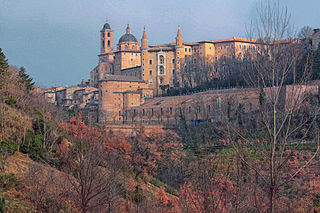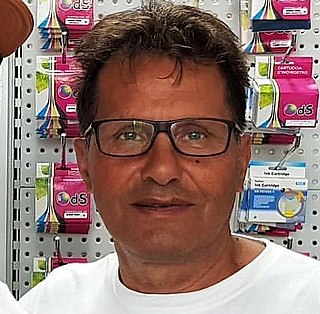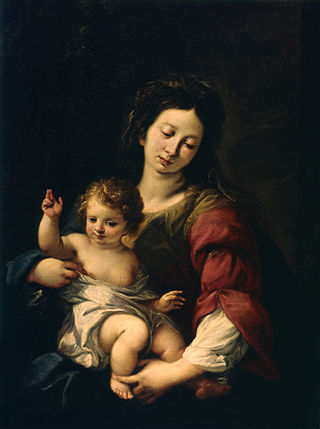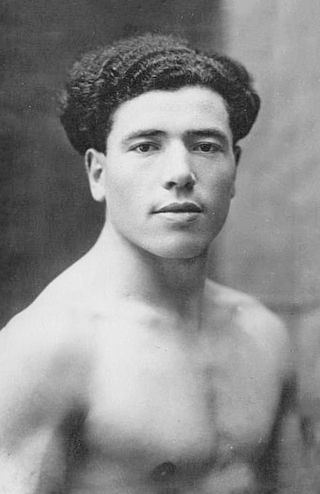
Giuseppe Biasi (Sassari, 1885 – Andorno Micca (Biella), 1945) was an Italian painter.

Giuseppe Biasi (Sassari, 1885 – Andorno Micca (Biella), 1945) was an Italian painter.
While pursuing classical studies in accordance with his family’s wishes, Biasi became well known in his hometown for caricatures published in local humorous journals when he was still very young. His drawings kept up to date with the latest French and above all Mitteleuropean models and achieved considerable success also beyond the national borders. He contributed to the most important Italian magazines of the period, including L’illustrazione italiana, Avanti della Domenica and Il Giornalino della Domenica, and finally established himself as the illustrator of Grazia Deledda, with whom he shared a determination to assert the specific values of Sardinian culture in post-unification Italy. He also began painting, primarily folkloristic depictions of his homeland but informed by an awareness of the latest developments in European painting, with which he came into contact very early through the shows of the Secessione Romana movement and the Venice Biennale, where he made his debut at the Esposizione Internazionale d’Arte della Città di Venezia in 1909. Participation in exhibitions in Rome and Milan was interrupted only for the short period when he served as a volunteer in World War I. The period 1924–26 saw a number of journeys to North Africa in search of ways to revitalise his means of expression. An interest in decoration and experimentation with mosaic and fresco techniques developed in the 1940s.

Urbino is a comune (municipality) in the Italian region of Marche, southwest of Pesaro, a World Heritage Site notable for a remarkable historical legacy of independent Renaissance culture, especially under the patronage of Federico da Montefeltro, duke of Urbino from 1444 to 1482.
L'Osservatore Romano is the daily newspaper of Vatican City State which reports on the activities of the Holy See and events taking place in the Catholic Church and the world. It is owned by the Holy See but is not an official publication, a role reserved for the Acta Apostolicae Sedis, which acts as a government gazette. The views expressed in the Osservatore are those of individual authors unless they appear under the specific titles "Nostre Informazioni" or "Santa Sede".

Walter Alfredo Novellino, is an Italian football manager and former player, who played as a midfielder.

Antonio "Antonello" Venditti is an Italian singer-songwriter and pianist who became popular in the 1970s for the social themes addressed in his songs.

The Pinacoteca di Brera is the main public gallery for paintings in Milan, Italy. It contains one of the foremost collections of Italian paintings from the 13th to the 20th century, an outgrowth of the cultural program of the Brera Academy, which shares the site in the Palazzo Brera.
Giuseppe Dossena is an Italian football manager and former football player, who played as a midfielder. He played for several Italian clubs throughout his career, in particular Torino and Sampdoria, where he won several titles. At international level, he represented the Italy national football team, and was a member of the Italian squad that won the 1982 FIFA World Cup.

The Madonna della Seggiola or The Madonna della Sedia is an oil on panel Madonna painting by the High Italian Renaissance artist Raphael, executed c. 1513–1514, and housed at the Palazzo Pitti Collection in Florence, Italy. Although there is documentation on its arrival to its current location, Palazzo Pitti, it is still unknown who commissioned the painting; however, it has been in the Medici family since the 16th century.

Carlo Francesco Nuvolone was an Italian painter of religious subjects and portraits who was active mainly in Lombardy. He became the leading painter in Lombardy in the mid-17th century, producing works on canvas as well as frescoes. Because his style was perceived as close to that of Guido Reni he was nicknamed il Guido della Lombardia.

Giuseppe Ghezzi was an Italian painter of the Baroque period, active mainly in Rome.

Giuseppe Palmieri was an Italian painter of the late Baroque period.

Giuseppe Nicola Nasini was an Italian painter of the Baroque period and active in Rome and Tuscany.

Giuseppe Vittorio Raimondo "Pippo" Baudo is one of the most famous Italian television presenters, with a career spanning six decades. He is often nicknamed "Superpippo". Baudo has also been the artistic director and president of the Teatro Stabile di Catania.

Giuseppe Zocchi was an Italian painter and printmaker active in Florence and best known for his vedute of the city.

Lorenzo Giovanni "Renzo" Arbore is an Italian television host, singer, actor and film director.

The Fourth Estate is an oil painting by Giuseppe Pellizza da Volpedo, originally titled The Path of Workers and made between 1898 and 1901. It depicts a moment during a labor strike when workers' representatives calmly and confidently stride out of a crowd to negotiate for the workers' rights. Its name refers to the working class as standing alongside the three traditional estates that divided power between the nobility, clergy, and commoners.
Giuseppe Bertolucci was an Italian film director and screenwriter. He directed 26 films between 1972 and 2012. He was the younger brother of Bernardo Bertolucci.
Ettore Sordini was an Italian artist, a disciple of Lucio Fontana, a friend and collaborator of Piero Manzoni and a member of the Gruppo del Cenobio.

Erminio Spalla was an Italian professional heavyweight boxer, film actor and singer.

Achille Beltrame, was an Italian painter, illustrator and commercial artist. His name is indissolubly tied to the weekly La Domenica del Corriere, the covers of which he drew from the beginning weeks of the twentieth century to the closing weeks of World War II. Beltrame was the official cover-illustrator of La Domenica del Corriere until 1945. He was succeeded in this position by his disciple Walter Molino.
Mario Amura is an Italian photographer and cinematographer.
![]() Media related to Giuseppe Biasi at Wikimedia Commons
Media related to Giuseppe Biasi at Wikimedia Commons